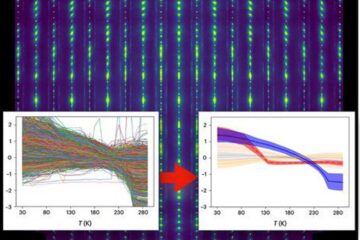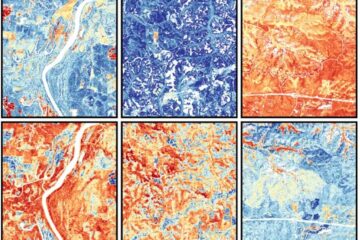Greening up the blue dye in jeans, police uniforms and the red, white and blue

That effort is the topic of an article in the current edition of Chemical & Engineering News (C&EN). C&EN is the weekly newsmagazine of the American Chemical Society (ACS), the world's largest scientific society.
In the article, C&EN Assistant Managing Editor Michael McCoy notes that concerns about the environmental effects of indigo represent a modern concern about an ancient product. Indigo produces a rainbow of hues, ranging from deep navy to pale pastels. For centuries, the primary source of indigo was branches of a bush native to India.
In 1878, German chemist and Nobel laureate Adolf von Baeyer made the first synthetic indigo, but the process was too expensive. It took chemical manufacturer BASF years to find a practical process for making the dye, and that happened only because of a lucky accident in which a lab worker broke a mercury thermometer, and the mercury catalyzed a reaction to make the dye.
The story describes how a partnership between the dye manufacturer DyStar and Swiss startup RedElec Technologie may be the beginning of a new revolution in indigo dyeing that will improve its environmental profile. To get indigo dye to attach to denim and other fabrics requires chemical reactions before and after the dye impregnates the cotton fibers. Even with modern improvements to the technique, the process produces large amounts of waste. The article highlights a new approach designed to achieve a long-standing goal of eliminating the need for sodium hydrosulfite in the dyeing process. Doing so would green up the indigo dyeing process and stop a water pollution problem at its source.
The American Chemical Society is a nonprofit organization chartered by the U.S. Congress. With more than 164,000 members, ACS is the world's largest scientific society and a global leader in providing access to chemistry-related research through its multiple databases, peer-reviewed journals and scientific conferences. Its main offices are in Washington, D.C., and Columbus, Ohio.
To automatically receive news releases from the American Chemical Society contact newsroom@acs.org
Media Contact
More Information:
http://www.acs.orgAll latest news from the category: Life Sciences and Chemistry
Articles and reports from the Life Sciences and chemistry area deal with applied and basic research into modern biology, chemistry and human medicine.
Valuable information can be found on a range of life sciences fields including bacteriology, biochemistry, bionics, bioinformatics, biophysics, biotechnology, genetics, geobotany, human biology, marine biology, microbiology, molecular biology, cellular biology, zoology, bioinorganic chemistry, microchemistry and environmental chemistry.
Newest articles

Machine learning algorithm reveals long-theorized glass phase in crystal
Scientists have found evidence of an elusive, glassy phase of matter that emerges when a crystal’s perfect internal pattern is disrupted. X-ray technology and machine learning converge to shed light…

Mapping plant functional diversity from space
HKU ecologists revolutionize ecosystem monitoring with novel field-satellite integration. An international team of researchers, led by Professor Jin WU from the School of Biological Sciences at The University of Hong…

Inverters with constant full load capability
…enable an increase in the performance of electric drives. Overheating components significantly limit the performance of drivetrains in electric vehicles. Inverters in particular are subject to a high thermal load,…





















